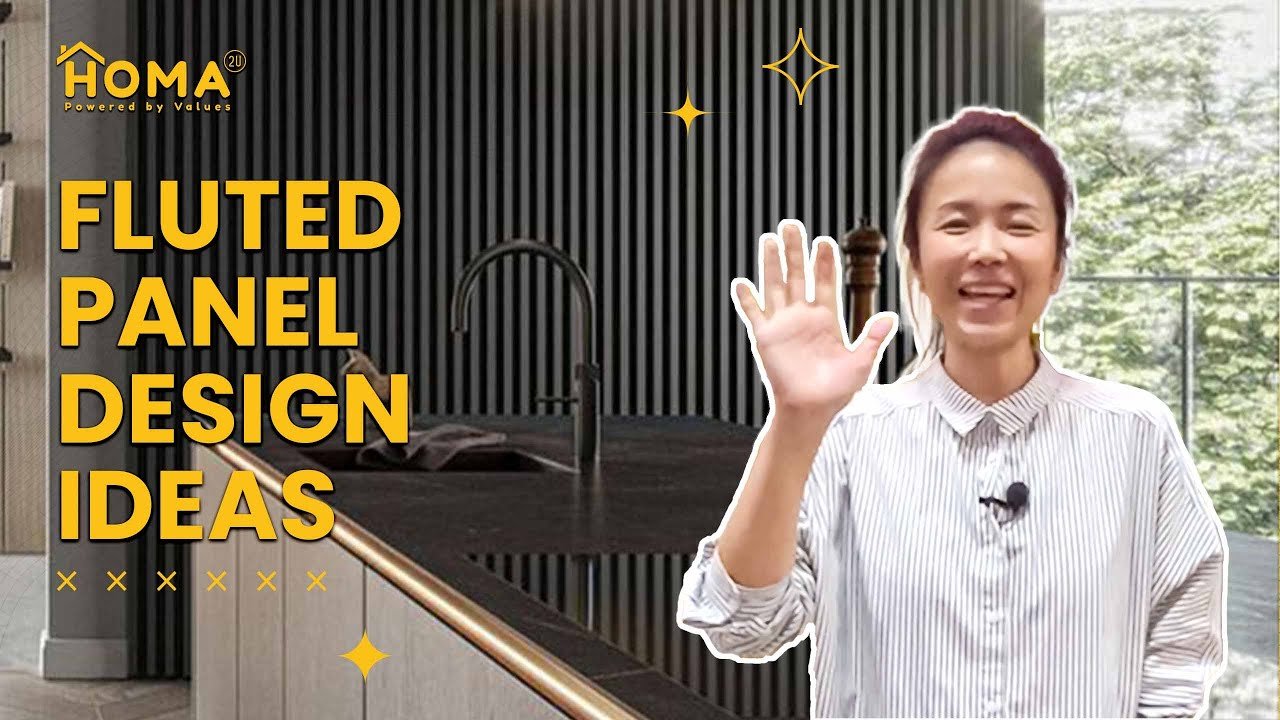Fluted Panels: A Timeless Design Element
Fluted panels, a classic architectural and design feature, have been gracing interiors and exteriors for centuries. Their distinctive vertical grooves not only add texture and depth but also evoke a sense of elegance and sophistication. From ancient Greek temples to contemporary homes, fluted panels have proven their versatility and enduring appeal.
Historical Significance
The origins of fluted panels can be traced back to classical architecture. The term “fluting” itself comes from the Latin word “flutum,” meaning “to blow” or “to flow,” which aptly describes the flowing lines of the grooves. In ancient Greece and Rome, fluted columns were a hallmark of grandeur. The Greek Doric, Ionic, and Corinthian orders all featured fluted columns, with the grooves serving both decorative and structural purposes.
In these classical structures, fluting helped to visually lighten the columns while adding an element of rhythm and proportion to the architecture. The effect was not just aesthetic but also served to emphasize the height and slenderness of the columns, contributing to a sense of harmony and balance in the design.
Modern Interpretations
In modern design, fluted panels have evolved beyond their classical roots to become a versatile element in both residential and commercial spaces. Their application is diverse, ranging from wall coverings to cabinetry, and even furniture. Here’s how contemporary designers are reimagining this timeless feature:
Interior Walls: Fluted panels can add an elegant touch to interior walls, creating visual interest and texture. Whether used in living rooms, hallways, or bedrooms, they can transform a plain surface into a statement piece. The depth created by the fluting can also play with light and shadow, adding a dynamic quality to the room.
Cabinetry and Panels: In kitchens and bathrooms, fluted panels on cabinetry can add a sophisticated touch. This technique can be used on both traditional and modern cabinetry designs, providing a subtle yet striking contrast to flat surfaces.
Furniture: Fluted panels are also making their way into furniture design. From accent tables to headboards, the incorporation of fluting can elevate the look of everyday pieces, making them stand out in any room.
Commercial Spaces: In commercial interiors, such as hotels, restaurants, and offices, fluted panels can contribute to a luxurious ambiance. They are often used to highlight key areas, like reception desks or feature walls, adding a touch of elegance to professional spaces.
Material and Finish Options
Fluted panels can be crafted from a variety of materials, each offering a unique aesthetic and functional benefits. Traditional materials include wood and stone, which lend a classic, warm feel to the design. However, modern innovations have introduced materials such as:
- MDF and Plywood: These engineered woods are popular choices for their versatility and cost-effectiveness. They can be easily painted or stained to match various design schemes.
- Metal: Fluted metal panels can add a sleek, industrial touch to contemporary designs. They are often used in commercial spaces for a striking visual effect.
- Glass: For a more refined look, fluted glass panels can be used, particularly in high-end interiors. They offer a unique play of light and shadow while maintaining an airy, sophisticated appearance.
Design Considerations
When incorporating fluted panels into a design, it’s important to consider several factors:
- Proportion and Scale: The size and depth of the fluting should be proportional to the space. Large, deep grooves may be overwhelming in a small room, while shallow fluting might be lost in a large space.
- Lighting: Fluted panels interact interestingly with light. Consider how natural and artificial light will highlight or cast shadows on the grooves to enhance the desired effect.
- Complementary Elements: Fluted panels should harmonize with other design elements in the space. Balance them with complementary textures and colors to create a cohesive look.
Conclusion
Fluted panels are more than just a design trend; they are a versatile and enduring element that bridges historical elegance with modern sophistication. Whether used in classical or contemporary contexts, they offer a way to infuse texture, depth, and character into a space. As design continues to evolve, fluted panels stand as a testament to the timeless appeal of architectural craftsmanship, proving that some elements of design truly are ageless.
